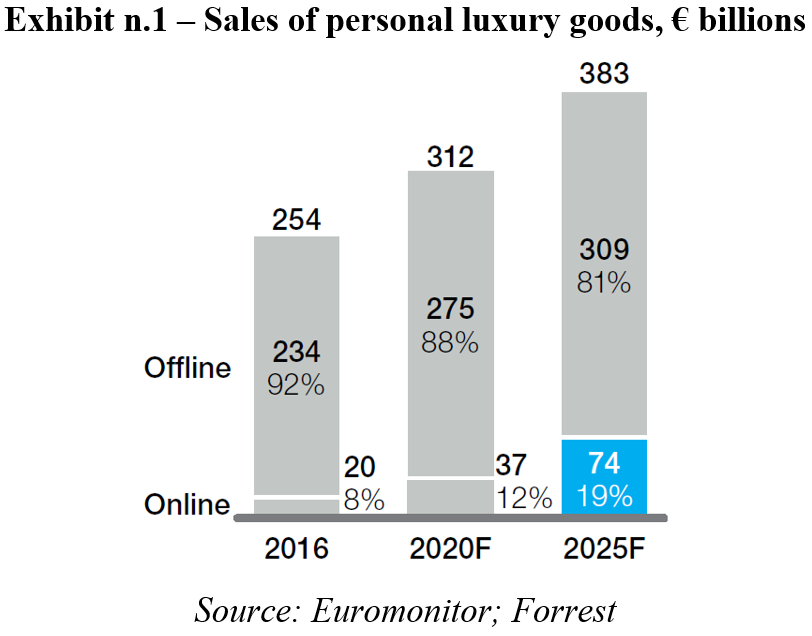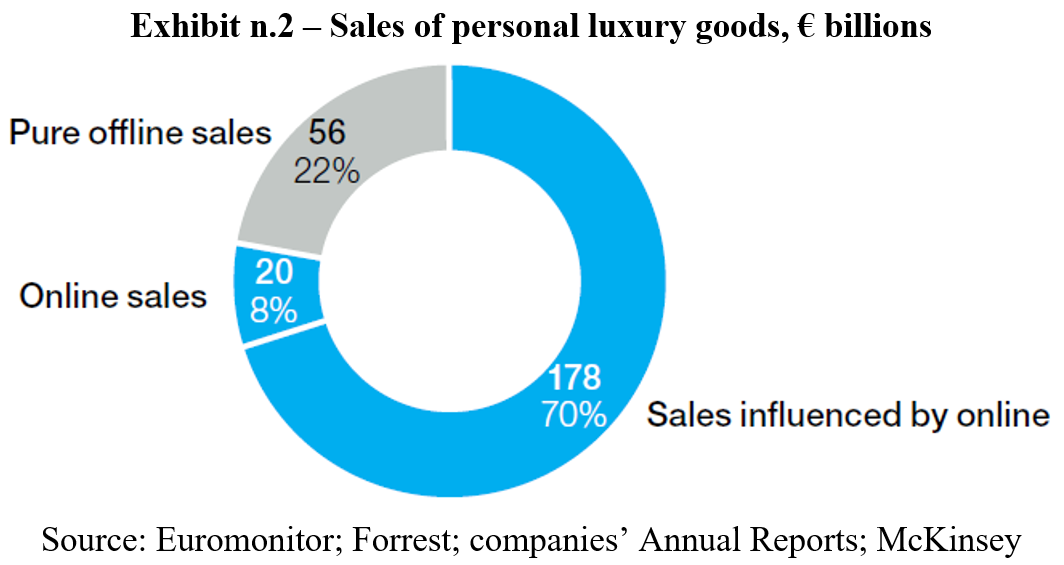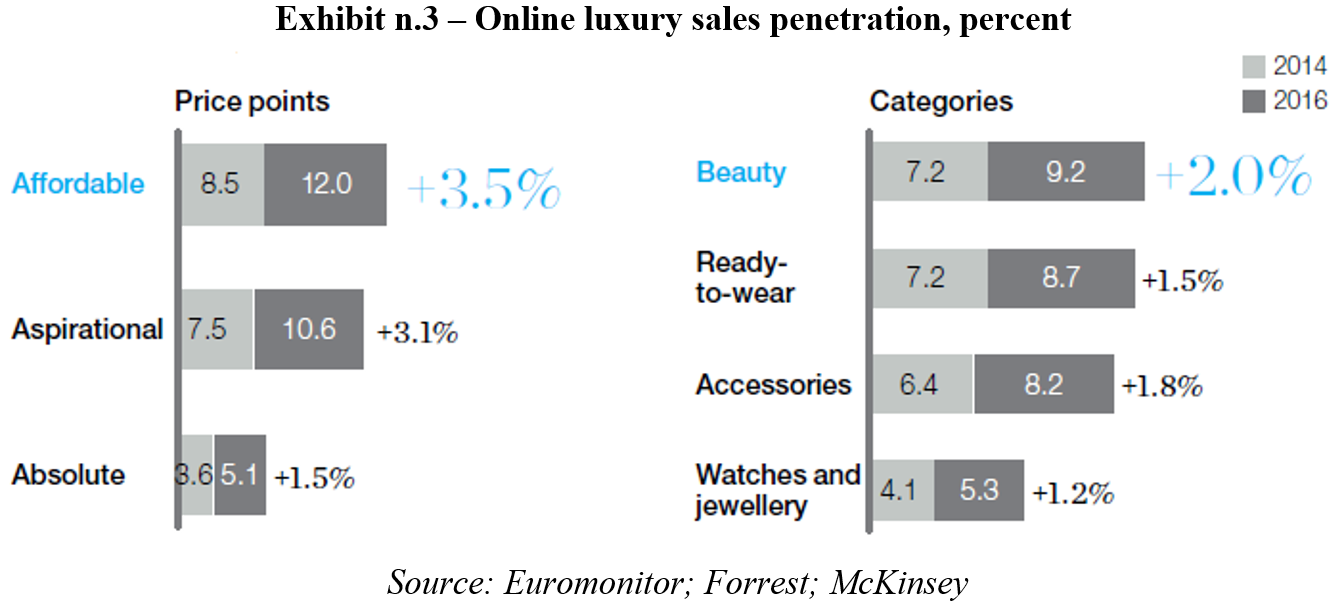Why should you open a jewelry website?
In all sectors, including jewelry one, there is an increasingly necessary digital opening with a synergistic management of online and offline touchpoints that allow the customer to meet the brand. While in the past the jewelry industry and, more in general, the luxury industry considered the Internet an unsuitable tool to show and sell products, now we have to accept that new technologies have forcefully entered these realities as well.
For luxury companies, having a website is essential and it is even more important to manage it appropriately to increase the flow of customers both on digital media and in physical stores. The online touchpoints such as the website, social networks, blogs, etc. are closely connected with physical touchpoints such as the store and for this reason they have to be managed with an overall logic.
As showed by Federpreziosi Confcommercio on the 8th September 2019 at the VicenzaOro fair during the Digital Talk “Communicating values: objectives and means in the digital today”, the jewelers operating on the web have on average doubled their revenues compared to the jewelers who do not have invested in digital. More recently, a strong push for change has been led by the Covid-19 emergency which has forced physical stores to close their shutters and, for those who have not already done so, re-evaluate the Internet as a way to stay in touch with their customers and meet new ones.
In 2018, the famous multinational strategic consultancy McKinsey & Company, specialized in data collection and analysis of emerging markets and trends, carried out an interesting study of the clothing, fashion and luxury industries and how these are changing due to the digital revolution. A research by McKinsey & Company shows that online sales of luxury personal goods, such as clothing, footwear, accessories, jewelry, watches, leather goods, beauty products and perfumes, account for 8% of the 254 billion euros related to the global luxury market. This figure is five times higher than in 2009 and it will more than triple by 2025, reaching around 74 billion euros. This means that nearly one-fifth of personal luxury sales will take place online.

The second very important data published by McKinsey & Company concerns the impact that digital has on the choice of brand and products. From this research, it appears that 70% of sales of luxury products are “digitally influenced”, which means that the customer has visited one or more digital touchpoints before purchasing.

Obviously, the impact of digital on the consumer’s behavior varies by product category and price point: the most expensive goods are those that have a lower percentage of online purchases, while the cheapest products, such as beauty products, clothing and accessories, are those with the highest percentage of online sales.

The incidence of digital obviously changes according to the company’s strategies: the brand may decide to be online through a website, an e-commerce, social networks and digital marketing activities; or, it could decide to use the Internet as the only showcase of its products and a means to convey its mission and its distinctive features. However, we can say that today all companies must be present online to be able to communicate with a much wider catchment area than just passers-by in the city who stop in front of the store.
Following the digital revolution, the purchasing process of jewelers’ customers has therefore become longer, more complex and less linear as well, characterized by online and offline touchpoints, as explained in our blog post: jewelry marketing – customer journey and photography.
How to show jewelry to increase online and in-store sales
To make website or any digital touchpoint visitors falling in love with your jewels, you need to show your products with beautiful high-resolution photos and still life photos that convey all the information the consumer wants to have: which product is it, what its particularities are, in what variants of colors or materials is it proposed, in what dimensions is it available etc.
The photos of jewels that reach the hearts are the creative photos or photos of the “worn jewel” and, on the website, they are mainly used in the Home page or as a cover photo of a collection. For example, to promote the summer jewelry collection, the jewels are shown on a model on the beach, or summer settings are created with the jewels leaning against a rock. These photographs are usually taken by professional photographers who deal with the choice of the model, the creation of the setting and the creation and editing of the photo. These photos are usually fewer than the majority of the shots published on the website, as their purpose is to draw attention, but they do not convey any information about the product.
The photos that provide information are jewels’ still life photos, that are the typical photos for an e-commerce. These photos show the product as worn and with a white background. The photographic process of these photos is very laborious if you do not use a photo box suitable for jewelry. Normal lightboxes are not suitable for taking pictures of jewelry because they usually do not avoid the creation of shadows under the products and do not include a software to take and edit automatically the photo. The use of a jewelry photo studio like Studio4 Jewels Pro, indeed, makes it possible to take jewelry photos in a few seconds thanks to its lightbox and software that makes the process of taking and editing photos automatic and suitable to promote and sell jewelry online. Usually on the product sheet are published several photos of the same product are published, in which different details are shown. For example, you can show the product as worn, in different angles or with different focuses on the details of the product.
Having beautiful photos online leads to an increase in sales both through digital and physical channels, since the consumers increasingly search for the product online first and then go to the point of sale to complete the purchase. If they see photos on the website that arouse their attention, they will go to the shop. This phenomenon is called web-rooming and it has developed hand in hand with the opposite phenomenon called show-rooming, a term used to indicate the tendency to search for the product at the point of sale and then buy it online. These two phenomena show that the boundary between online and offline is blurred and the operations carried out on online channels also affect the results of offline channels, such as the store, and vice versa.
AUTHOR

Dalia Lombardi
Jewelry Marketing Expert

 Italiano
Italiano Deutsch
Deutsch Français
Français Español
Español
